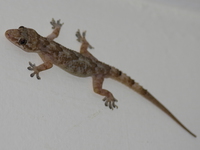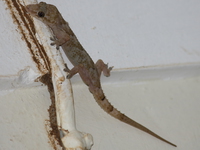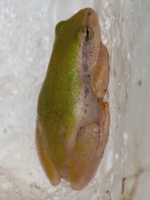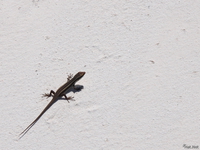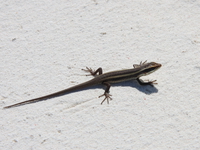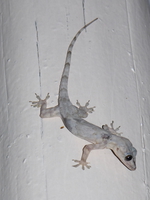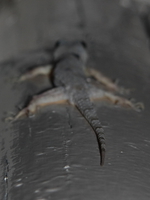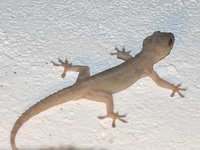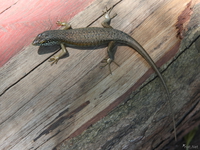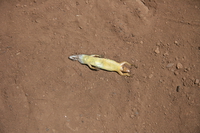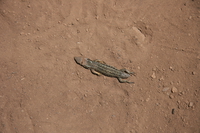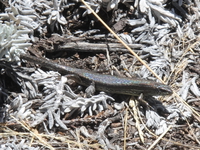geckos
Geckos are small to average sized lizards belonging to the family Gekkonidae which are found in warm climates throughout the world. Geckos are unique among lizards in their vocalizations, making chirping sounds in social interactions with other geckos. There are 1196 different species of geckos. The name stems from the Malay word gekoq, imitative of its cry. Geckos are unusual in other respects as well. Most geckos have no eyelids and instead have a transparent membrane which they lick to clean. Many species will, in defense, expel a foul-smelling material and feces onto their aggressors. Many species have specialized toe pads that enable them to climb smooth vertical surfaces and even cross indoor ceilings with ease. These antics are well-known to people who live in warm regions of the world where several species of geckos make their home inside human habitations. These species (for example the house gecko) become part of the indoor menagerie and are seldom really discouraged because they feed on insect pests.
Geckos come in various colors and patterns. Some are subtly patterned, and somewhat rubbery looking, while others can be brightly colored . Some species can change color to blend in with their surroundings or with temperature differences. Some species are parthenogenic, the females capable of reproducing without copulating with a male. This improves the gecko's ability to spread to new islands.
The toes of the gecko have attracted a lot of attention, as they adhere to a wide variety of surfaces, without the use of liquids or surface tension. Recent studies of the spatula tipped setae on gecko footpads demonstrate that the attractive forces that hold geckos to surfaces are van der Waals interactions between the finely divided setae (almost 500,000 setae on each foot, and each of these tipped with between 100 and 1,000 spatulae) and the surfaces themselves. The length of each seta is twice the diameter of a human hair, i.e 100 millionth of meter and each spatulae is 200 billionth of meter long just below wavelength of visible light. These kinds of interactions involve no fluids; in theory, a boot made of synthetic setae would adhere as easily to the surface of the International Space Station as it would to a living room wall, although adhesion varies with humidity and is dramatically reduced under water, suggesting a contribution from capillarity. The setae on the feet of geckos are also self cleaning and will usually remove any clogging dirt within a few steps.
Geckos' toes seem to be "double jointed", but this is a misnomer. Their toes actually bend in the opposite direction from our fingers and toes. This allows them to overcome the van der Waals force by peeling their toes off surfaces from the tips inward. In essence, this peeling action alters the angle of incidence between millions of individual setae and the surface, reducing the van der Waals force. Geckos' toes operate well below their full attractive capabilities for most of the time. This is because there is a great margin for error depending upon the roughness of the surface, and therefore the number of setae in contact with that surface. If a typical mature 70g gecko had every one of its setae in contact with a surface, it would be capable of holding aloft a weight of 133 kg: each spatula can exert an adhesive force of 10 nN.
The family Gekkonidae is divided into five subfamilies, containing numerous genera of gecko species. Many geckos are kept as pets and will eat various kinds of insects and sometimes fruit.
The current mascot of SUSE Linux distribution is a gecko called Geeko, also known as the "SUSE Lizard", but is a Chameleon for the shape.
In the past few years, geckos have entered into the consciousness of the USA as the advertising icon for the insurance company GEICO, whose advertisements feature an animated anthropomorphic gecko (of the Phelsuma genus) that speaks English with an East London accent.
It is reported that Muhammad, the prophet of Islam commanded geckos to be killed and called them "noxious (i.e. harmful) creatures".

